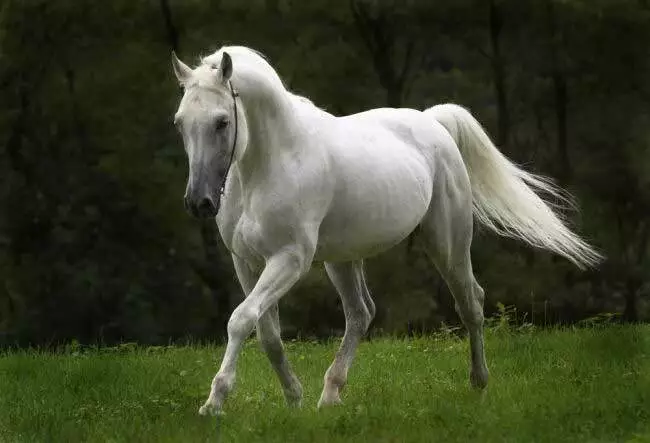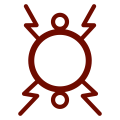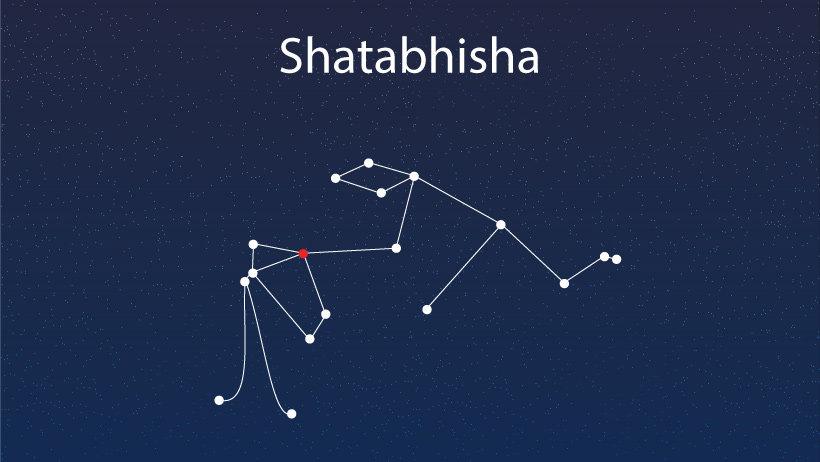

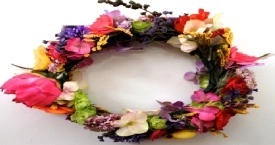
Characteristics male
Males born in #Shatabhishak Nakshatra are very religious and follow rituals sincerely. These males are very stubborn in nature and no one can make them change their minds once they have made a decision. They also have a strong belief in their principles and their every action depends on what they feel is the right thing to do. They are also very emotional and will get upset very easily. Even though they are extremely intelligent, they get angry at the slightest remark and will lash out instantly. Because of their humble nature, they do not like to brag about their achievements and will easily get underestimated by others. But people will recognize them eventually when the time arrives for them to display their talents.
Profession male
These males will have to struggle quite a bit at their early ages in terms of their profession. Before the age of 34, males of this nakshatra will experience many changes in their career and have dilemmas regarding their choices, but after that age, they can expect steady progress in their career and will be able to move forward. Jobs related to astrology, psychology, reiki, and other various healing arts will be most suitable for them as they are very spiritual in nature.
Compatibility male
Males of this nakshatra will have to face many difficulties when it comes to relatives and family, as their relatives will come to them regarding their problems. And because of their kind heart, they will help them every time. They might have to go through difficult situations because of their brothers and they will not receive much help from their fathers, but they will be very close to their mothers and the bond between them will be strong. Their married life will also be unstable even if they get a very accomplished wife.
Health male
The health of the males of this nakshatra will not be very good and they will have to suffer through many physical troubles such as respiratory problems, urinary tract infections, and diabetes. Because of a weak immune system, they are prone to catching infections frequently.
Characteristics female
Shatabhisha nakshatra females are calm and humble as they are very spiritual and religious and will not cause harm to anyone consciously. They are very God-fearing and follow their spiritual rituals religiously. As they have a calm soul, it is rare for anyone to ever find them in any arguments or fights. But they can also stand up for themselves in an aggressive manner if anyone misbehaves with them or tries to wrong them in any way. Though they will not get involved in controversies outside of their family, they will have to face many family conflicts and quarrels which will cause them mental instability. They have a generous soul and are sympathetic with good memory.
Profession female
Females of this nakshatra have a very sharp brain and have acute knowledge in the field of science. They love to learn about new things and gather knowledge as much as possible. This keenness to learn will come in handy when they are trying to make the important decision of what profession they want to take. As they have an intuitive brain, the best career option for them where they will get to put their knowledge to use will be scientific studies. These females should opt for biological science and will be good doctors or surgeons.
Compatibility female
Females of this nakshatra will have a husband who will love them very much and their compatibility will be over the top. They will dote on their husbands and they will have a very loving relationship. But the longevity of the marriage will not be the best. These females will have to suffer a lot in their marriage because of many reasons including distance where they will have to stay far from their husbands for a long period of time or they might even lose their husbands at an early stage of their life.
Health female
In terms of health, these females will have to suffer a lot as their health will be frequently unstable. They might have to suffer from urinary and uterus disorders along with chest pain and gastrointestinal disease.
Dates for Shatbhisha Nakshatra in 2022
January 6, 2022 February 2, 2022
March 2 & 29, 2022 April 25, 2022
May 22, 2022 June 19, 2022
July 16, 2022 August 13, 2022
September 9, 2022 October 6, 2022
November 30, 2022 December 27, 2022
Shatabhisha Nakshatra Padas
Pada 1st: Dominated by Jupiter and falling in Sagittarius navamsa, the focus of the first pada of this nakshatra will be on the optimistic and generous nature of the people of this category due to which they might get cheated by others.
Pada 2nd: The second pada of Shatabhisha nakshatra is dominated by Saturn and it lies in Capricorn navamsa. The main focus here is to achieve their goals. But they should be careful not to get ahead of themselves as that might stress them out.
Pada 3rd: Ruled by Saturn and lying in Aquarius navamsa, peole born in this pada are farsighted and can sometimes be very aggressive and irascible. They should make sure not to lose their temper that frequently and to meditate.
Pada 4th: The importance of this pada is compassion and passion. Since this pada of the nakshatra is dominated by Jupiter and lies in Pisces navamsa, the negative effects of the planets might cause addiction problems.
Features of Shatabhisha Nakshatra
Symbol- #Empty #circle. Thousand flowers or stars
Ruling planet- #Rahu
Gender- #Female
Guna- sattva/tamas/sattva
Presiding Deity- #Varuna
Animal- #Mare
Indian Zodiac- 6°40′ – 20° Kumbha










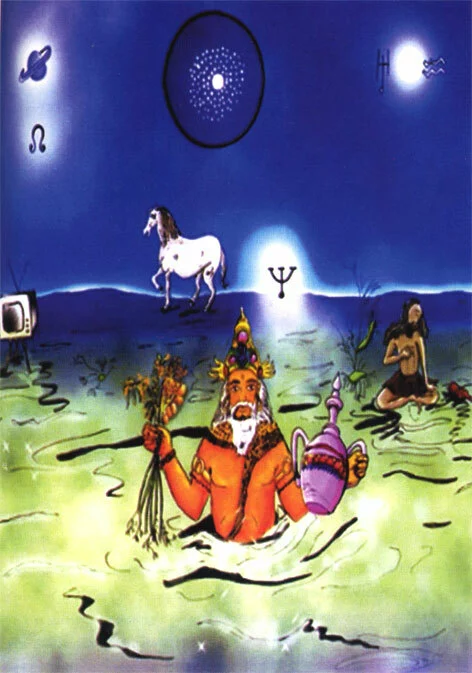



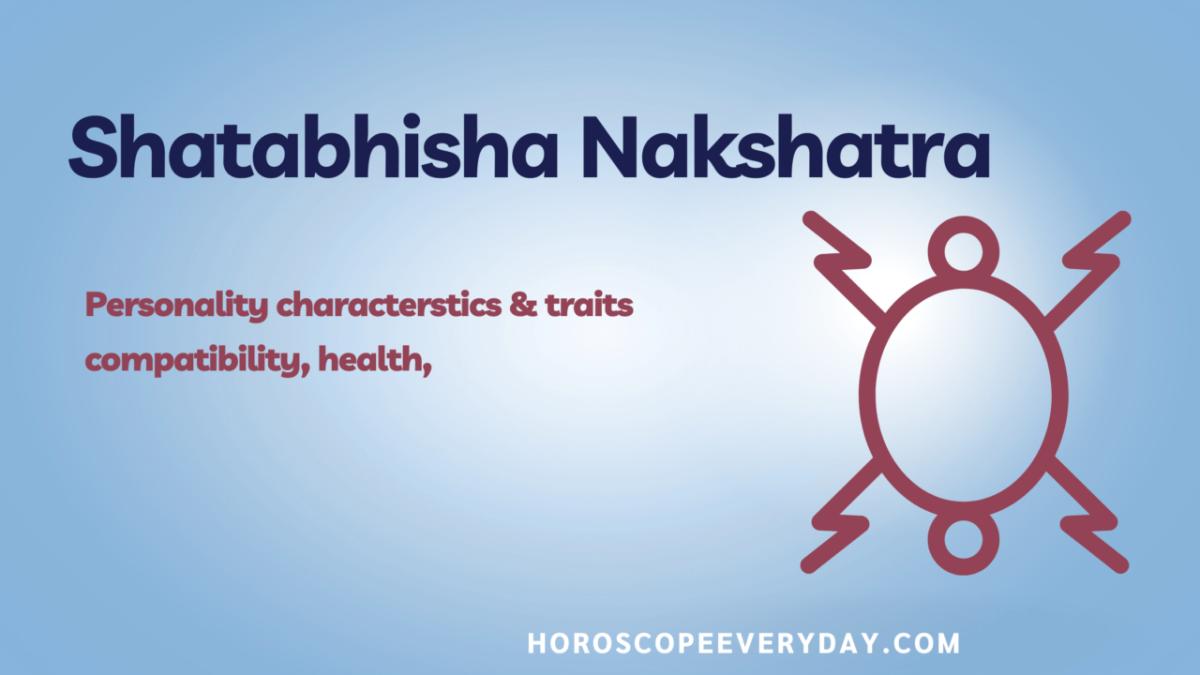
 Neon ring on a violet background in fog and star dust vector illustration. Luminous round frame as a visualization of futuristic cyber space. Circle in smoke concept for for virtual reality
An empty circle symbolizes
Neon ring on a violet background in fog and star dust vector illustration. Luminous round frame as a visualization of futuristic cyber space. Circle in smoke concept for for virtual reality
An empty circle symbolizes 

